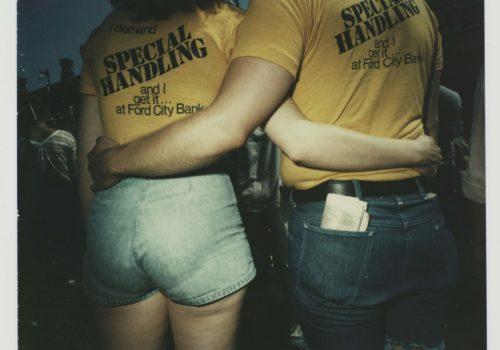This is a first in France and Europe: a major monograph dedicated to American photographer Barbara Crane is being presented by the Centre Pompidou.
Crane, who passed away in 2019, was a prominent figure in the United States, and her work is part of the most prestigious collections. However, her name remains relatively unknown in Europe, and this exhibition offers a unique opportunity to discover her prolific and diverse body of work. Through this retrospective, which includes over 200 photographs, some of which have recently entered the museum’s collection, the Centre Pompidou invites us to delve into the world of a woman who pushed the boundaries of her medium, and whose work continues to surprise and inspire.
Curated by Julie Jones, the exhibition focuses on the first 25 years of Crane’s career, from 1960 to 1985, a period marked by her use of analog photography and a strong geographical and artistic connection to Chicago. It was through her exposure to avant-garde European photography theories and her studies under Aaron Siskind at the Institute of Design that Barbara Crane truly forged her artistic identity and laid the groundwork for her experimental journey.
Barbara Crane produced a massive body of work. Julie Jones speaks of monumental archives that reflect the breadth of the artist’s efforts. “I need to work to be happy, and I have always passionately loved making images,” Crane once said. Her images are impossible to reduce to a single style. Throughout her career, she explored an impressive variety of techniques and approaches: black and white, color, collage, double exposure, Polaroid… Always in series. Each photograph is part of a sequence, a narrative progression where every image gains meaning within the whole.
In Private Views, she ventures into spontaneity, exploring color and nighttime photography while perfecting her approach to faces and bodies she captures at dusk. Human Forms is a striking example of her exploration of abstraction. In it, she photographs her children without ever revealing their faces, focusing on the contours of their bodies, reduced to pure lines, blurring the boundaries between photography and painting. This search for abstraction is also evident in the darkroom, where Crane humorously plays with optical illusions, as seen in her Baxter Labs series. By combining negatives in the enlarger, she creates abstract graphic forms, repeating and reorganizing patterns that develop around a central highlighted element.
This characteristic tension between formal experimentation and documentary ambition runs throughout her work and reflects a deep interest in humanity. Even when photographing architecture, as in Loop Series, her gaze seeks out human presence: an open window, a raised curtain, passersby… These images also reveal her keen sense of observation, the research she conducted beforehand, and the strict protocols she imposed on herself. She went out to photograph, capturing with precision the play of shadows and light on the city’s historic buildings, always at the same time of day, in a constant quest for balance between chance and control. “Even when I was in the car, I would note the location and time so I could return,” she admitted in an interview.
The exhibition concludes with a large pink wall, a tribute to her studio, a true space of creative experimentation. Here we find later series such as On The Fence, as well as more intimate photographs, marking the transition to the second half of her life. This phase is characterized by more introspective work, which we eagerly await to discover in France. The question remains: when?
More information
- Centre Pompidou – Barbara Crane Exhibition
- September 11, 2024 – January 6, 2025
















